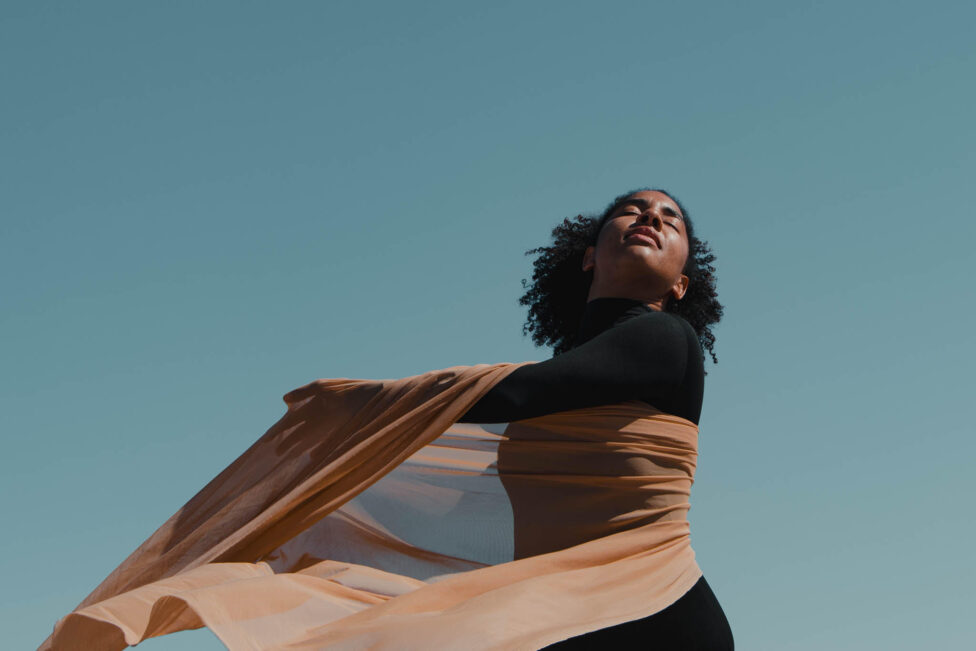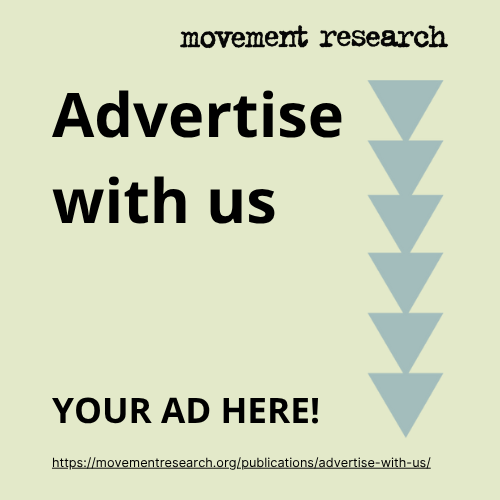Megan Curet and Milteri Tucker Concepcion are both accomplished dancers and choreographers based in New York. They shared thoughts about Afro-Boricua identity in the diaspora and the culture of Puerto Rico’s Bomba dance’s connection to history. In this dialogue, both artists reflect on their artistic practice that expands beyond movement and creation into cultural preservation and relationship building. Their mutual respect and inspiration towards each other is the foundation of this rich conversation.
-Takahiro Yamamoto, CC Co-Editor
This conversation comes from the Pepatián South Bronx “Reflecting Archives: Artists in Conversation” project and has been edited for the purpose of publication.
Megan Curet
We are here, Afro-diasporic forms, here and there. We’re looking at the ways in which both of our works encompass Bomba, but also this identity, this Afro-Boricua identity both within and outside of the diaspora.
Milteri Tucker Concepcion
That’s why cultural work is very important because it connects home and wherever you are in the world. And also, moving into the future, it just gives more information to the next generation that’s coming. What I love about this is that we are talking about not only our own experiences, but also we are able to delve into experiences in history from the genre that was non-existence twenty years ago. There was no archival. You find now a whole bunch of people writing about Bomba, which is great. But when I first really delved deeper, it was non-existent. I wanted to give them (people with Afro-Boricua identity) everything so they could ask more questions.
And so for me, it was important then. I had to go back and relearn my Black history because that wasn’t taught to me in the schools of Puerto Rico. In Puerto Rico, we learned everything about the U.S., all the U.S. presidents, the Thirteen Colonies, and all these amazing people, only focusing on one Black person; Martin Luther King. I didn’t even know who Arturo Schomburg was when I left Puerto Rico because it was not being taught until in college. I just took this course, Puerto Ricans in the U.S., and that’s when I opened my eyes to the history here. So I wanted my work to reflect on that. When you see me and when you see me speaking Spanish, don’t think I’m just Dominican or Haitian or Cuban. Puerto Rico is Black folks, too. And that has been the premise of my work, to continue to elevate, not only my voice, but the Black voices of the island and to visualize the Afro-Boricua people, also.
MC
And I think that brings us to a really important segue. There’s something significant about the texture of the bomba skirt fabric within the culture of Bomba dance as well as within a lot of our Afro-Latin movement forms, right? There’s something about using the material.
MTC
Well, yeah, I mean, remember when Bomba… When we look at the history of Bomba, when it started, we were not wearing jeans and shorts and high heels. Those were material and clothes that were imposed on our ancestors. Our African ancestors did not use this type of clothing; it’s more European. So, because it was part of the everyday life of that time, the skirt became a way of playing and communicating.
I think nowadays with new communities and new ways of thinking, they have dropped that. I remember going to Puerto Rico, and everybody would go with a skirt. In different circles. And even if you’re in the Chinchorro and Saturce, everybody will carry the skirt because it is part of it… it became a part of this genre. So in my opinion, I feel that it’s important because it creates another dimension. It’s a beautiful way. I went to Cuba and I saw it. Even in the Afro religious sections of it, they do have it. They carry it because it’s important. The thread is the connection. It’s a connection to so many different parts of history. It is a form of resistance as well.
It’s not just a costume for me. It’s honoring the history that came from before.

MC
For me, I always grew up understanding Bomba with the fabric and its materiality of the skirt. However, I don’t consider my work Bomba dance. My work is specifically about revisiting, reclaiming, and borrowing elements from Bomba. I grew up dancing Bomba within a familial landscape within a cultural landscape. And it was later on that I started to think of a blend of the political discrepancies that I was experiencing. I wanted to respond through a choreographic approach that I didn’t find in Bomba. But, Bomba, it came back for me.
I went to a residency in 2017 in Zurich, Switzerland, and I just said, “What do I need to do to make this work sustainable? To achieve longevity within the community?” Because what I’m doing now is not sustainable: just experiencing, witnessing, responding, experiencing, witnessing… So I was drained. I was full of anxiety. I was full of sadness. And I remember putting on Afro-Cuban rhythms, Bomba rhythms, and even Marc Anthony. I explored various different approaches to rhythm. And I just moved. I was shaking and grooving. I was not attaching myself to any particular stylistic response. And it was this residency that took me back to percussion. I thought, “Okay, there’s something here worth investigating.” Then I thought, “Okay, I want to continue my Bomba practice to continue that connection, that cultural connection. But I want to use what informs me physically to inform my work.” So I included the skirt in so much of my work. I also experimented just with Tela the fabric, and how that would inform my contemporary dance practice.
I think it’s important that going off of something that you shared just now in reference to the Bomba skirt, we have to understand how to be able to work with and without materials. But there is something that connects us to movement when we do not let go of that information. For a while I was exploring fabrics in most of my contemporary pieces, whether I was using them as set designs or working with them in movements. And my initial response was, “how can I connect to the rhythmic percussion within fabric? What is that relationship to the movements?”
There’s something symbolic about fabric that takes us back to plantation fields, that takes us back… Even connecting us to this ancestral struggle that I find pertinent to my practice. Again, even if my intention is not to make a Bomba dance, there’s something that remains a part of that vocabulary of ancestral connection for myself. So I bring that into the studio when I’m working with other dancers to get them to interact with and outside of their bodies. There’s a linkage there to our ancestors and our culture. It’s like its own language form.
MTC
No, definitely. I think it is like food, right? The recipes that changed and stuff, that’s how I feel about how we are connected. But somehow different still, even though we are away a lot, we share a lot of foods that’s directly from an African country and we just call it something different and put in something different (in relation to the evolution of African culture in the diaspora).I feel the same way with the fabric. It’s the fabric that really connects us. And whether you use it literally or not, I think both forms are beautiful.

MC
We engage in storytelling in an abstract form, as a form of preservation. There’s something about reclaiming the meaning of these materials like the skirt and its fabric, which lends an olive branch to the idea of preservation. That Is really at the root of what we do.
MTC
Yes.
MC
I thought of all of the various ways that black people, when they were brought over to the new world, had to fight to disguise their practice of remaining alive. While we had to be granted these materials from their masters in order to continue that preservation, I think about how talented and creative we are as a people (black people and people within the African diaspora who had to make due with what they had in order to preserve their culture and resist their oppressors). Because we took our art… We didn’t even know it was an art form, right? We took the things that keep us alive and we had to find a way to keep that alive. I think that makes us as a people so special. What I appreciate about the contributions of your work and what drives me to want to stand 10 feet, 10 feet in the ground with my work is that nothing that we are doing is being done within a vessel. Everything that we are doing as art practitioners and as Puerto Ricans from the island, from the diaspora, goes back to the community.
MTC
We just have to continue telling our own stories by using the past as a point of reference and collaborating more together. Go experiment, and don’t be afraid to just do it. As a community, we need to be able to support that in each other. Everybody is not going to dance the same way. It might be the same movement, but the intention and energy is not the same. And I think that as a community of dancers, and a community of Bomba, we have to welcome all the different ideas and experimentations, because that is how we the artists are dealing with what’s going on, not only in our personal lives, but as who we are in this world. This support is very important amongst us. You and I are able to share freely. I’m so proud of you and honored that you trusted me to guide you in your Bomba practice so that you can incorporate it in your voice.







